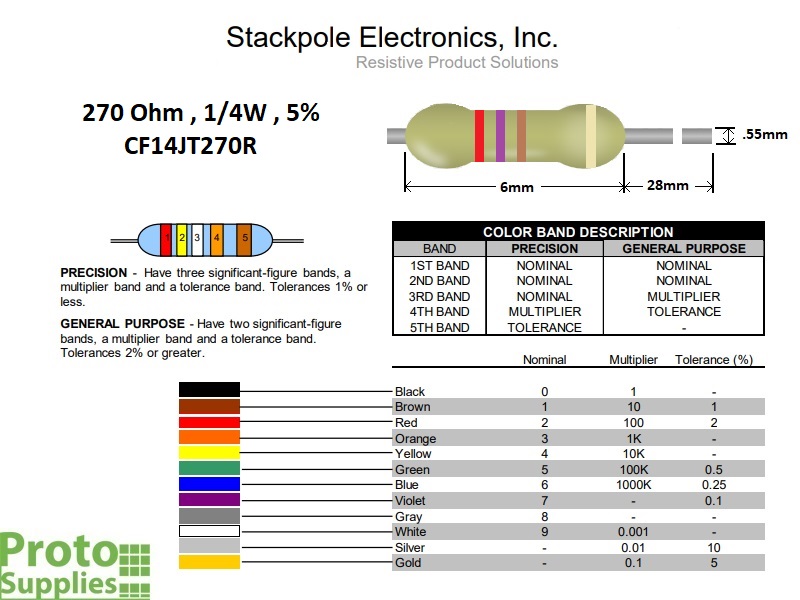

In the old days, 20% was also common, but these are now rare. The tolerance of resistors is mostly 1%, 2%, 5% and 10%.
2k ohm resistor color code code#
Resistor Color Code What is Tolerance of a Resistor? I use the Euro version of the symbol exclusively. The schematic symbols for resistors are either of those shown below. The letter “ R” and the “ 2k2” conventions are European, and not commonly seen in the US and other backward countries 🙂 Other variants are 0R1, for example, which means 0.1 Ohm. The use of the symbol for Ohms ( Omega, Ω) is optional, and is most commonly left off, since it is irksome to add from most keyboards. To explain – a resistor has a value of 2,200 Ohms. There are a few conventions that are followed, and these can cause problems for the beginner. Resistor values are often stated as “ k” ( kilo, or times 1,000) or “ M“, ( meg, or times 1,000,000) for convenience. The resistance value is specified in ohms, the standard symbol is “ R” or Ω. The value of a resistor is measured in ohms and represented by the Greek letter capital omega ( Ω).

This type of resistor makes an excellent light sensor. When the photocell is exposed to more light, the resistance decreases. The photo resistor or photocell is composed of a light sensitive material. The resistance between the two stationary contacts is, of course, fixed, and is the value specified for the potentiometer. Potentiometers generally have three terminals, a common slider terminal, and one that exhibits increasing resistance and one that has decreasing resistance relative to the slider as the shaft is turned in one direction. When the knob of a potentiometer is turned, a slider moves along the resistance element. What is a Potentiometer?Ī potentiometer is a variable resistor. There are non-inductive Wirewound resistors, but are not readily available, and usually not cheap. Resistors may also have inductance, and Wirewound types are the worst for this. Low noise circuits will always use low resistor values and low voltage wherever possible. Noise is proportional to temperature and voltage. Everything that is above 0K ( zero Kelvin, absolute zero, or -273 degrees Celsius) makes noise, and resistors are no exception. Acceptable to very good tolerance, good stability. Comparatively poor tolerance and stability. I shall only concentrate on the most common varieties, and the attributes I have described for each are typical – there will be variations from different makers, and specialized types that don’t follow these ( very) basic characteristics. Resistors are made from a number of different materials. Resistor Value Calculation Resistance Materials


 0 kommentar(er)
0 kommentar(er)
